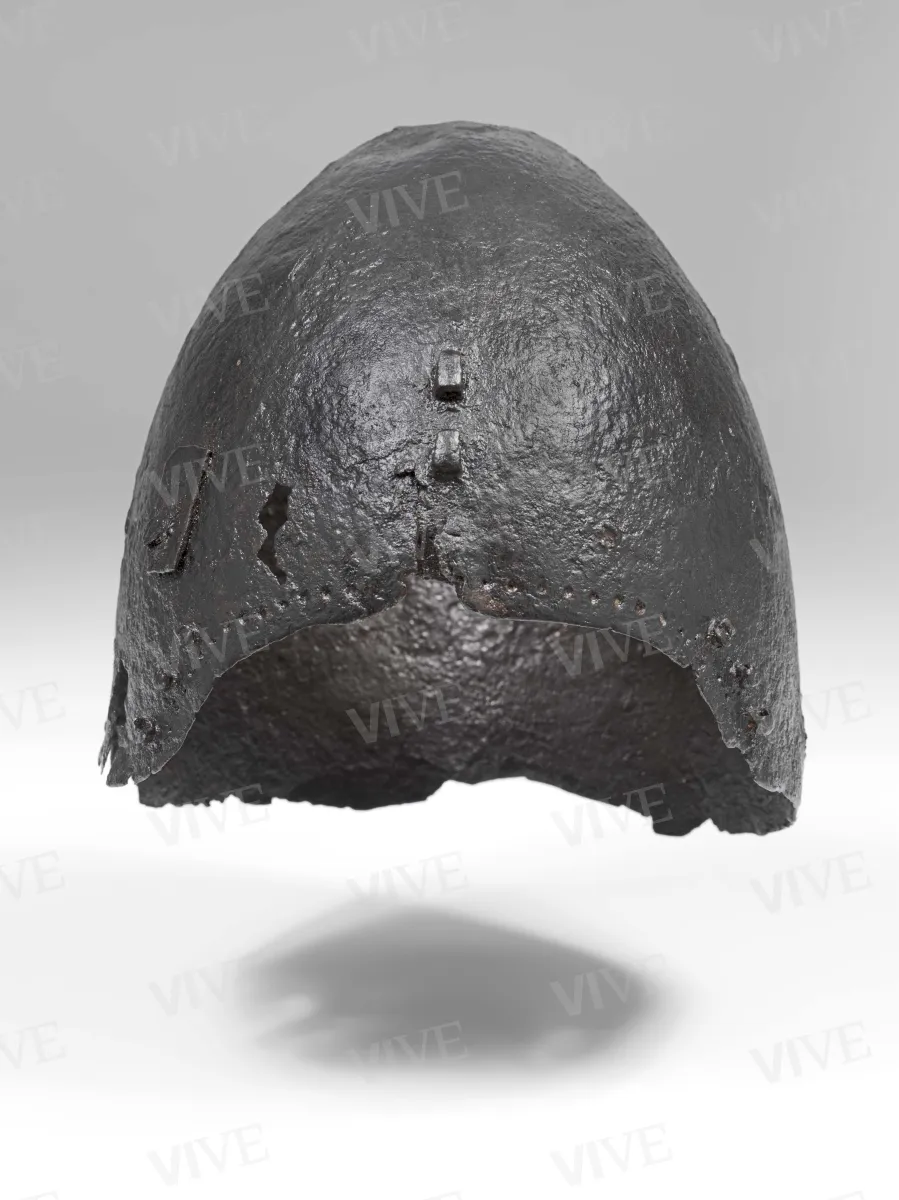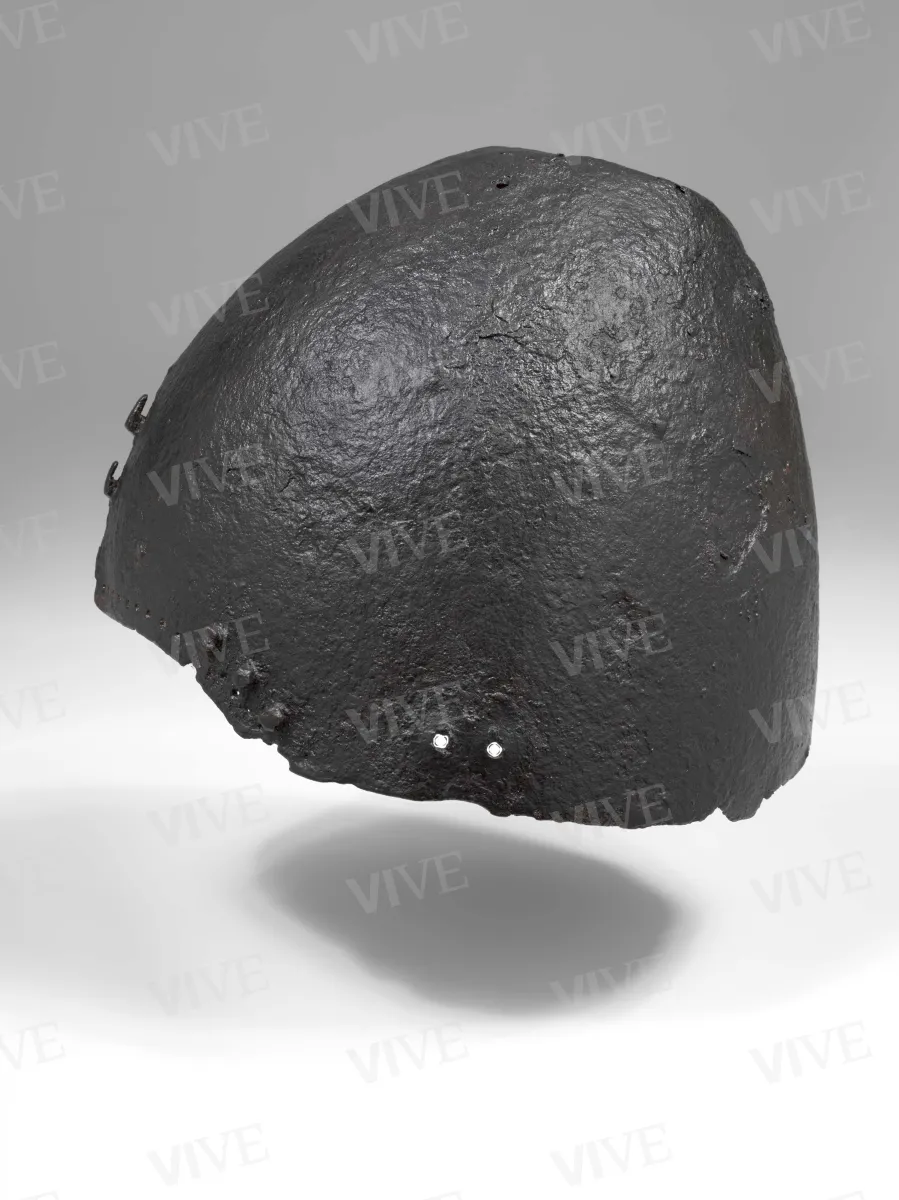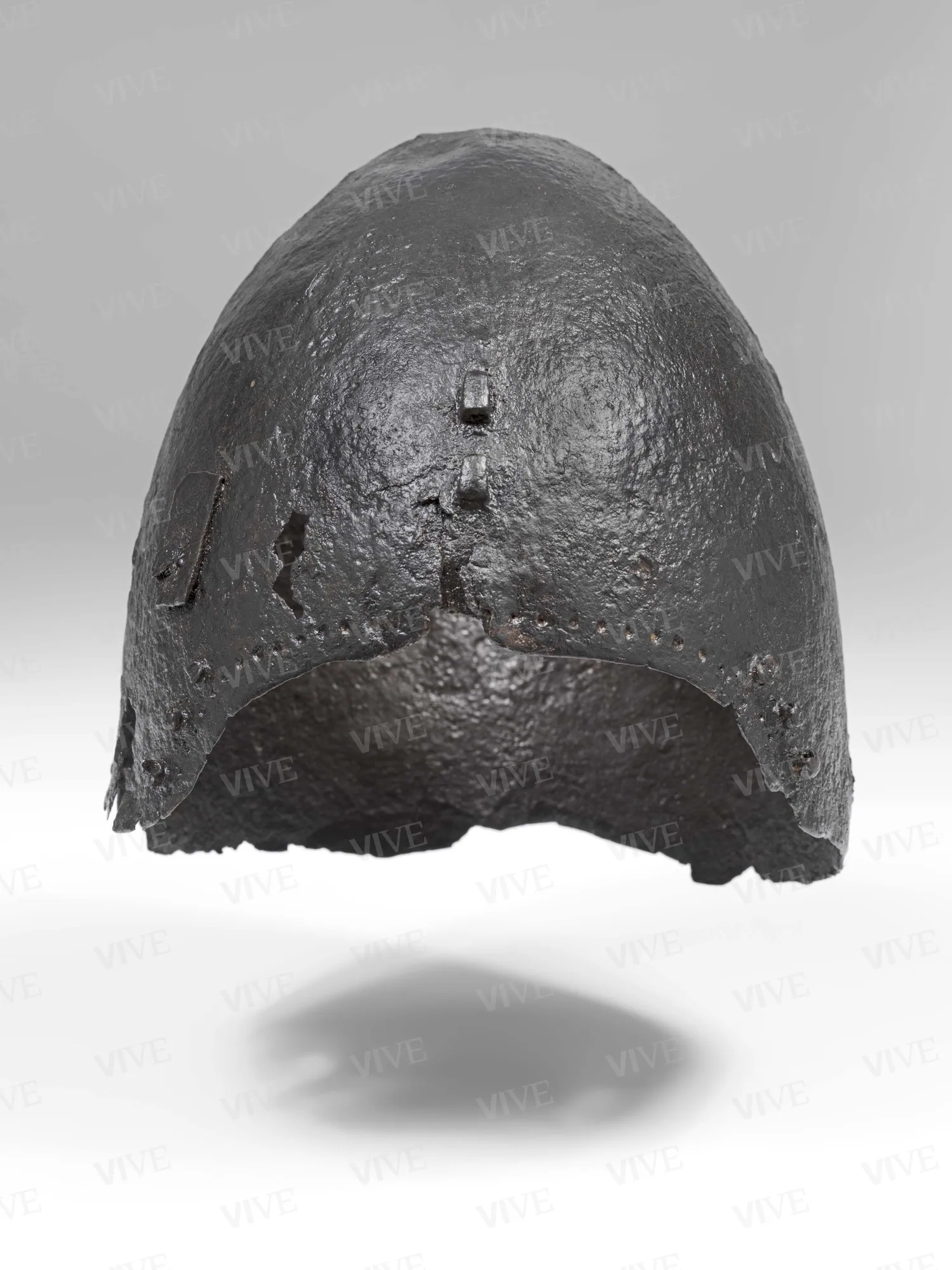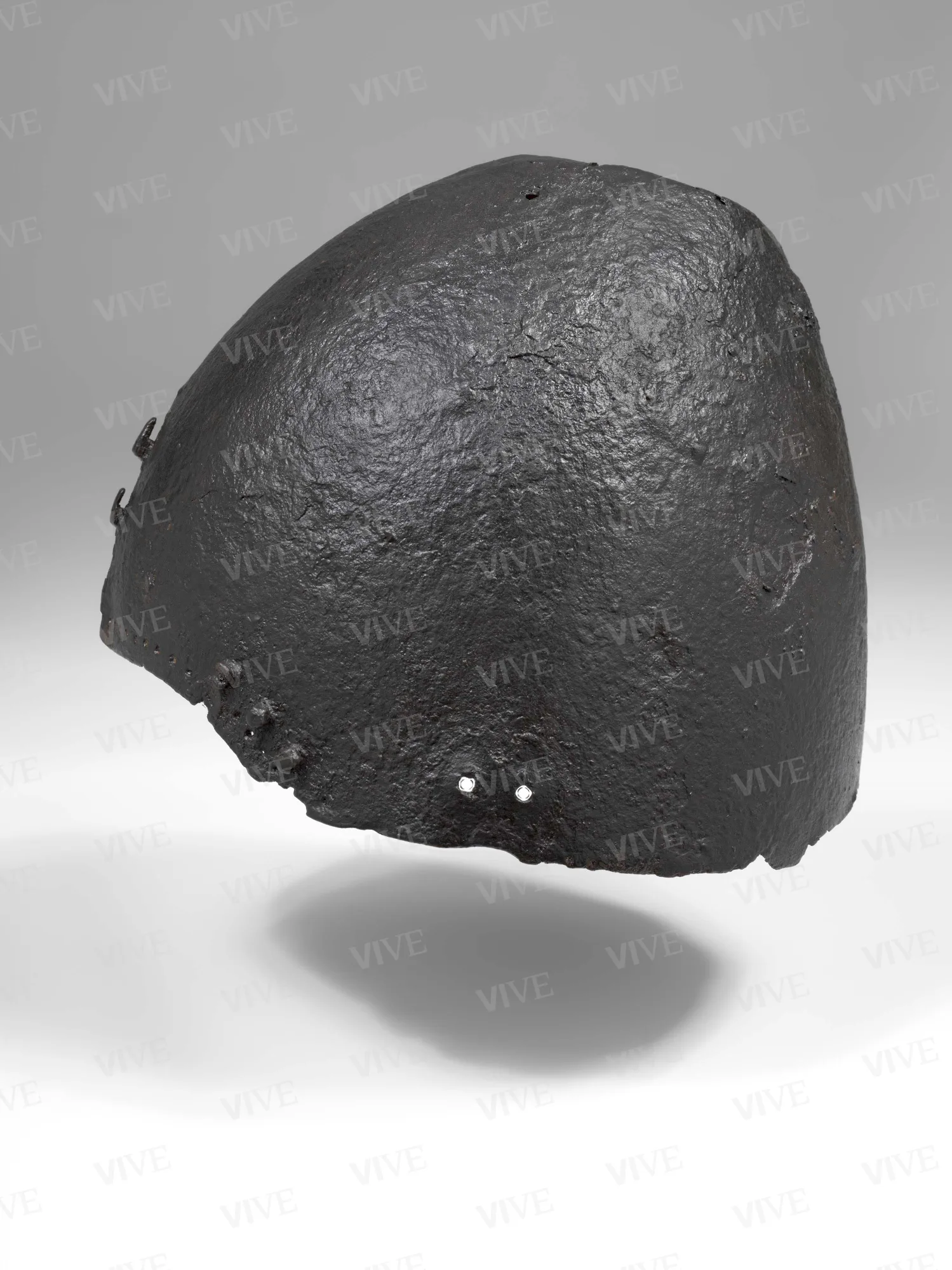Barbute (skullcap)
Italian production Ca 1320–1340.
Domed, pointed barbute skullcap with short face guard. Along the edges are the holes for the (fabric or leather) liner and the vervelles to which the aventail was attached.
Domed, pointed barbute skullcap with short face guard. Along the edges are the holes for the (fabric or leather) liner and the vervelles to which the aventail was attached.
Details of work
Catalog entry
Domed pointed barbute skullcap (missing the tip, which was replaced by an old rebating, Tomei 1977) with a short face guard. The piece (also referred to as a “cervelliere” or “bascinet”) was designed to protect the head; originally it was probably fitted with a fabric covering and a bell-shaped aventail ricasco that would cover the shoulders (Scalini 2018). Numerous rebatings were undertaken to fill in the gaps in the original. Along the edges are the holes for the (textile or leather) liner and the vervelle to which the aventail was attached. Holes for attaching the hinges of the missing visor are also visible. Two sets of three holes on each side are placed laterally along the face guard, while in the center, higher up, there are two superimposed hooks designed to hold the nasal and adjust it to two different heights. This type of skullcap was extremely common in Italy, where it is documented until at least 1360, and almost entirely replaced the great helm (originally the cap was worn under the great helmet). This type of armor was used exclusively by the cavalry (Scalini 2018; Scalini 2014). Nolfo di Carpegna (1969) compared this skullcap to a bascinet held at the Museo Comunale di San Gimignano (which also has the visor’s gyve pins, Terenzi 1967), and is dated by him to about 1400 and tentatively assigned to Italy. Laking (1920), on the other hand, assigned the bascinet to northern Italy while Terenzi (1967) dated it to about 1340.
Chiara Paniccia
Entry published on 12 February 2025
State of conservation
Not good. Signs of blunt blows and damage caused by rust. Numerous gaps restored through hammering.
Restorations and analyses
The skullcap shows signs of restoration that took place at an unspecified date prior to its acquisition by the collections of Palazzo Venezia (1959), which involved the application of soft metal (probably lead) to fill in the gaps on the iron surface.
Inscriptions
There is a Gothic “M” (mm 5x4) along one side of the lower edge.
Provenance
Collezione Odescalchi (artifact acquired from antiquarian Bacherau in Paris in 1901)
Exhibition history
Poppi, Castello dei conti Guidi, Mostra di armi antiche. Sec. XIV–XV, 1967;
Rome, Palazzo Venezia, Antiche armi dal sec. IX al XVIII già Collezione Odescalchi, May–July 1969;
Rome, Museo Nazionale del Palazzo di Venezia, L’elmo lucente dal XV al XIX secolo nella Collezione Odescalchi, December 16–January 16 2004;
Rome, Castel Sant’Angelo; Palazzo Venezia, Armi e potere nell’Europa del Rinascimento, July 26–November 11 2018.
Sources and documents
Tomei Alessandro, Scheda OA n. 31393 della Soprintendenza per i beni artistici e storici di Roma, October 29 1977.
References
Laking Guy Francis, A Record of European Armour and Arms through Seven Centuries, I, London 1920, p. 230, fig. 269;
di Carpegna Nolfo, La Collezione d'Armi Odescalchi in Roma, in «Waffen- und Kostümkunde», 3, 1961, pp. 63-71;
Terenzi Marcello (a cura di), Mostra di armi antiche. Sec. XIV-XV, catalogo della mostra (Poppi, Castello dei conti Guidi, 1967), Firenze 1967, n. 26;
di Carpegna Nolfo (a cura di), Antiche armi dal sec. IX al XVIII già Collezione Odescalchi, catalogo della mostra (Roma, Palazzo Venezia, maggio-luglio 1969), Roma 1969, p. 8;
Barberini, 1. Bacinetto, in Barberini, Maria Giulia (a cura di), L'elmo lucente dal XV al XIX secolo nella Collezione Odescalchi, catalogo della mostra (Roma, Museo Nazionale del Palazzo di Venezia, 16 dicembre-16 gennaio 2004), Roma 2004, p. 5;
Scalini Mario, From Helmets to Buckets. Bascinets and Hand Artillery of the Aldobrandesco Fortress of Piancastagnaio, in La Rocca Donald J. (a cura di), The Armourer's Art. Essays in Honour of Stuart Pyhrr, Woonsocket, Rhode Island 2014, pp. 43-54;
Scalini, I.8 Barbuta (coppo di), in Scalini Mario (a cura di), Armi e potere nell'Europa del Rinascimento, catalogo della mostra (Roma, Castel Sant'Angelo; Palazzo Venezia, 26 luglio-11 novembre 2018), Cinisello Balsamo 2018, p. 54.














